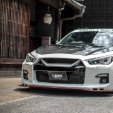Getting Rid Of Static
Announcements
-
Similar Content
-
Latest Posts
-
By Murray_Calavera · Posted
I've been doing it for longer then I can remember and on pretty much every car I've owned without any issues. Jack on a tow point (or under the rear diff), jack stands under control arms/other beefy suspension component is my go to if I'm not using the quick jack. -
By Murray_Calavera · Posted
@f00stx Do you have any polyurethane bushes? They can be pretty noisy if they dry out. -
Just to recap, was there a definitive answer on whether this unit (or a similar one) gets around the Japanese language problem? I want to upgrade my 370GT, but want to keep the cameras (and possibly upgrade them to HD if that's even possible?) but then use Australian nav data.
-
There would have to be hundreds of posts on the topic of doing the direct wire mod just on SAU alone. Just search SAU specifically, using google, and you should find stuff. Even just recently I have posted excerpts from the wiring diagrams, which are also all available, and discussed exactly how the FPCM does its job - mostly wrt how it interacts with the ECU/ignition wiring. But still, the info is there and relevant. Just search for posts by me on the topic in the last several months.
-
By joshuaho96 · Posted
I wouldn't trust the tow hook to hold. I would rather use a floor jack on the pinch welds. Honestly, I think your best bet at this point is quickjacks or similar.
-


1.thumb.png.36afd656b26d55f5d425fc76e21561f2.png)

Recommended Posts
Create an account or sign in to comment
You need to be a member in order to leave a comment
Create an account
Sign up for a new account in our community. It's easy!
Register a new accountSign in
Already have an account? Sign in here.
Sign In Now